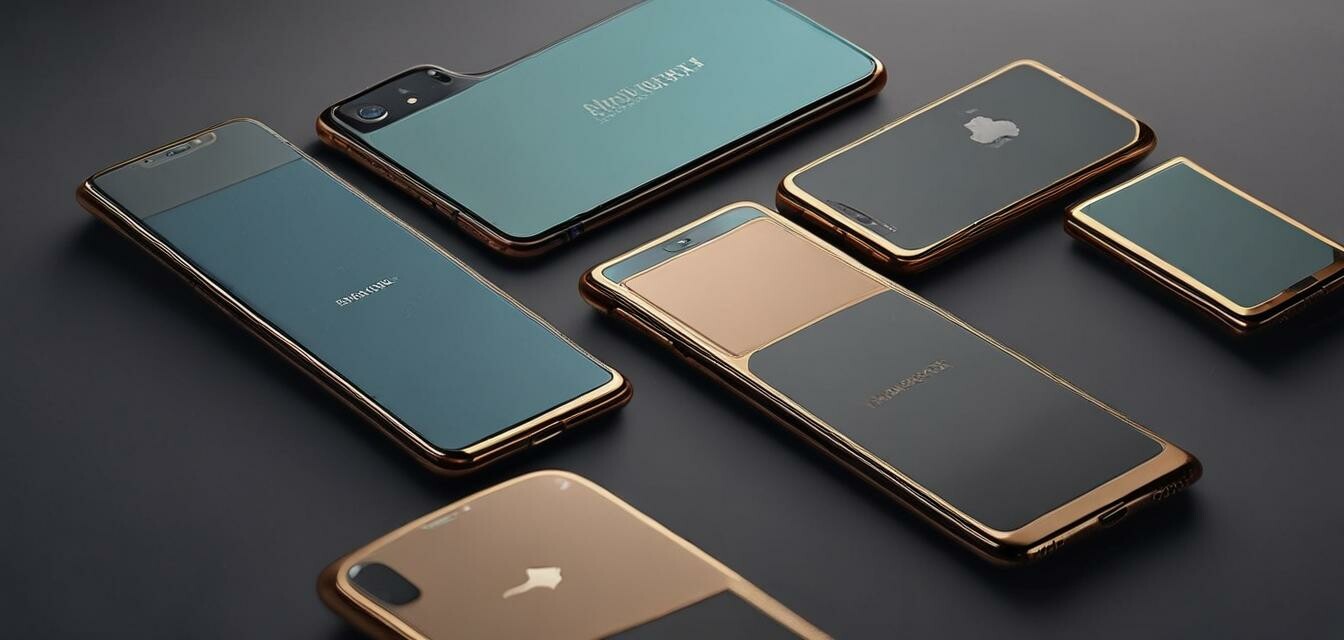
The Evolution of Luxury Phone Design
Key Takeaways
- Luxury phone design has evolved significantly over the last two decades.
- Emerging technologies play a crucial role in shaping future models.
- Materials like gold and ceramic are becoming more popular.
- Personalization is a growing trend in luxury phones.
- Anticipate future designs influenced by sustainability and functionality.
In the ever-changing landscape of technology, luxury phones stand out not only for their cutting-edge features but also for their exquisite design and craftsmanship. This article traces the journey of luxury phone design, showcasing how aesthetic preferences and technological advancements have shaped these coveted devices over the years.
A Brief History of Luxury Phone Design
The luxury mobile phone market began to gain traction in the early 2000s. With the introduction of mobile phones, brands recognized the opportunity to offer high-end devices tailored to affluent users. Below is an overview of how luxury phone brands have evolved over the years:
| Year | Milestone | Key Feature |
|---|---|---|
| 2001 | Launch of Vertu | Handcrafted luxury with precious materials |
| 2007 | Introduction of the iPhone | Touchscreen interface that became the standard |
| 2012 | Launch of Nokia 8800 Arte | Luxury design with stainless steel and leather |
| 2017 | Samsung Galaxy Note FE | Focus on premium build quality and features |
| 2021 | Global rise of customizable luxury options | Personalized luxury phones with bespoke materials and designs |
Trends in Luxury Phone Design
As we look toward the future, certain trends are beginning to define the luxury phone industry. Let’s explore some of these exciting trends:
- Material Innovation: The use of unique materials, such as ceramic, titanium, and even liquid metal, is making waves in luxury phone design.
- Personalization: Customers are increasingly seeking personalized options, allowing them to create one-of-a-kind devices.
- Technology Integration: Integration of advanced technology such as AR and AI is becoming essential, enhancing not just functionality but also user engagement.
- Sustainability: More brands are focusing on eco-friendly materials and manufacturing processes to appeal to socially conscious consumers.
- Foldable Designs: Innovative foldable technology promises to redefine phone portability and aesthetics.
Material Innovation in Luxury Phones
Luxury phone manufacturers have moved beyond conventional materials to incorporate premium elements, enhancing both durability and aesthetic appeal. Examples include:
- Gold and Platinum: Some brands use precious metals to frame devices and embellish features.
- Customized Leather: High-quality leather options for phone backs and cases are popular in luxury models.
- Glass and Sapphire: These materials provide a striking look and added scratch resistance.
What to Expect in Upcoming Models
With the speed of advancements in technology, the expectations for luxury phones continue to rise. Here’s what we can look forward to in future models:
- Enhanced AI features that provide personalized experiences.
- Integration of more health-monitoring features.
- Improved support for sustainability through recyclable materials.
- Greater customization options for consumers, making luxury phones truly personal.
- Advanced camera technologies for photography enthusiasts.
Future Sustainability in Luxury Phone Design
Sustainability is becoming a vital focus for luxury brands. Expect to see:
- Phones made from recycled materials.
- Eco-friendly packaging and accessories.
- Transparency in sourcing and manufacturing processes.
Conclusion
The evolution of luxury phone design reflects technology's pace and the changing preferences of affluent consumers. As brands continue to innovate, luxury phones will likely offer even more unique designs and features that cater to individual tastes. Keeping an eye on these trends ensures you remain informed in this dynamic space.
Pros
- Innovative designs that showcase craftsmanship.
- Personalized options catering to exclusive tastes.
- Integration of advanced technologies and materials.
Cons
- High price point may not be feasible for all consumers.
- Limited availability in certain markets.
- Potential for obsolescence as technology rapidly advances.
Explore More
Stay ahead in the world of luxury mobile phones. Check out some of our related articles:
